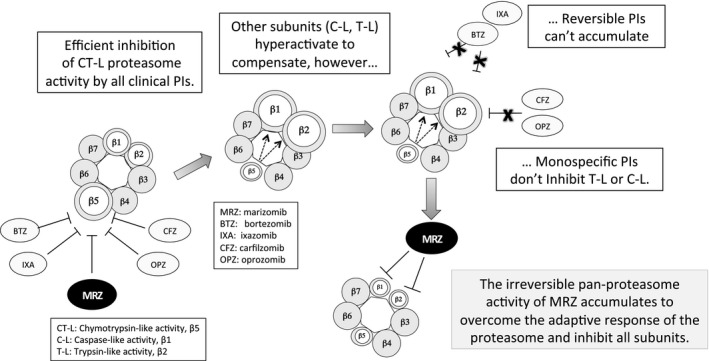Figure 4.

Hypothesis of compensatory activation and cumulative pan‐proteasome subunit inhibition by MRZ. Upon inhibition of CT‐L by all clinical proteasome inhibitors (PIs), the T‐L and C‐L subunits become hyperactive and/or increase in abundance, resulting in continued proteasome‐associated protein degradation, which cannot be inhibited by monospecific PIs. The irreversible binding of marizomib (MRZ) may afford a dual competitive advantage by (i) accomplishing more complete inhibition of CT‐L activity in the face of increased β5 subunit expression, while (ii) subsequently inhibiting the hyper‐activated T‐L and C‐L with repeat dosing.
